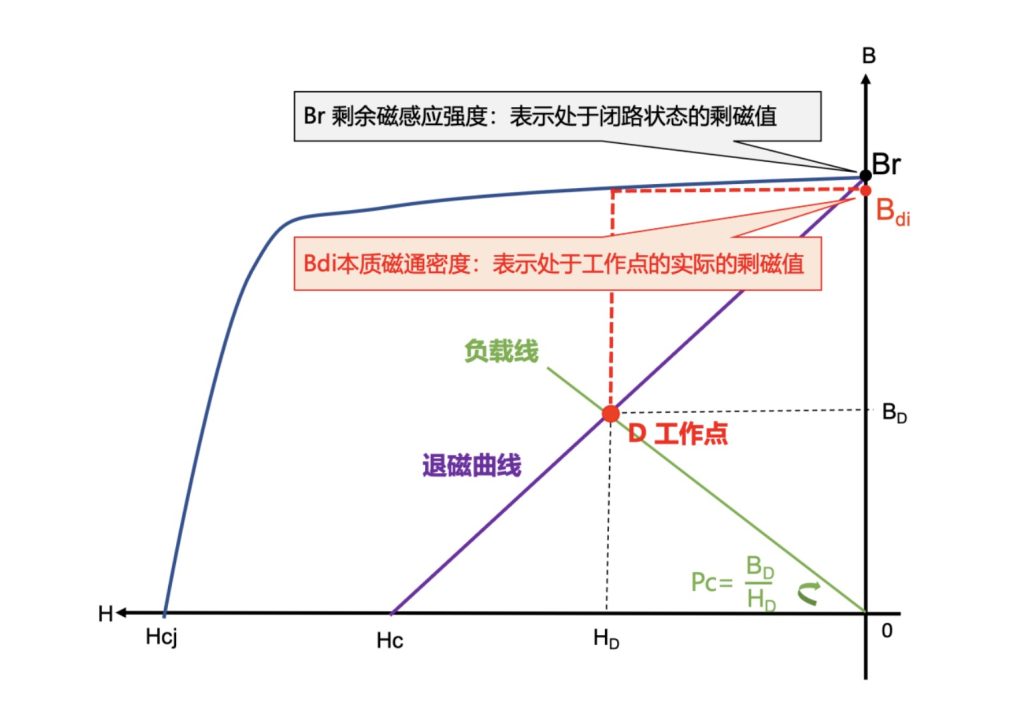Squareness is a critical indicator for measuring the demagnetization resistance of magnets, with a value closer to 1 indicating stronger demagnetization resistance. After heat treatment in a strong magnetic field, the magnetic properties of the magnet are significantly improved, the microstructure is refined, the main phase matches better with the grain boundaries, and the grain boundaries become clearer and smoother. The cooling method also affects the squareness, thereby improving the temperature stability of the magnet. The squareness of the B-H demagnetization curve is related to the sintering process and affected by the relative density, grain size, and distribution. The ratio of knee coercivity (Hknee) to intrinsic coercivity (Hcj) is a quantitative representation of squareness. The rectangularity (or squareness) of the intrinsic demagnetization curve is determined by the ratio of Hk to Hcj, with a larger ratio indicating more stable magnetic properties. Hk is the demagnetizing field intensity value corresponding to Bi=0.9Br, which is one of the essential parameters for permanent magnetic materials.

Knee Point Hk: When the external magnetic field increases, the magnetic induction intensity of the magnet decreases slowly, but drops rapidly after exceeding a certain value. The point on the demagnetization curve where Ji=0.9Br or 0.8Br is called the knee point, with the corresponding magnetic field being Hk. When the external magnetic field is greater than Hk, the performance of the magnet undergoes significant irreversible loss. There is controversy regarding the selection of the knee point position. The IEC has accepted the definition of Hk proposed by M. Katter, but only for neodymium-iron-boron magnets with HcJ > 400kA/M, referred to as HDx.
Squareness Q: Represented by Hk/HcJ, with a range of 0 to 1. The closer Q is to 1, the more square the demagnetization curve. Products with Q > 0.9 are considered qualified. Q has a positive correlation with (BH)max, meaning that the larger Q is, the larger (BH)max is. Q is inversely proportional to the reciprocal permeability μrec, with a larger Q resulting in μrec closer to 1, indicating stronger resistance to external magnetic fields, environmental temperature, and other interfering factors, and better stability. Factors such as the purity and ratio of raw materials, uniformity of powder particles, sintering and pressing processes, etc., affect the squareness of neodymium-iron-boron magnets. Abnormal grain growth or irregular grain shapes can reduce the squareness of the magnet.
